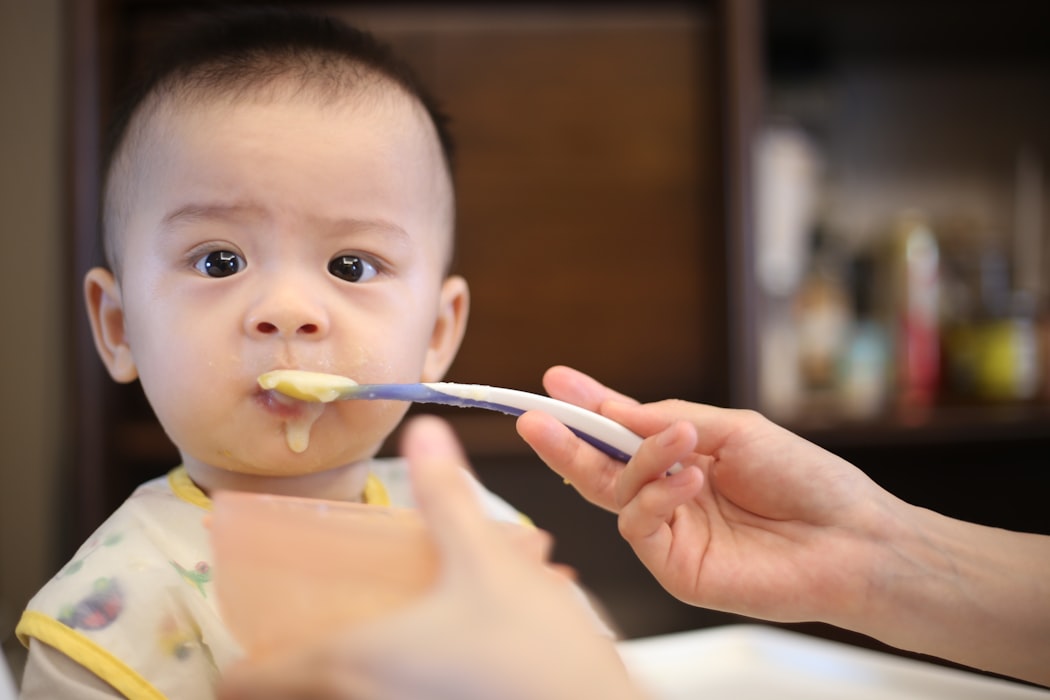When can your babies try baby food? Making the transition from breast milk or formula to solid food is a wonderful milestone in your baby’s life. However, there are a few things you need to know first. Timelines, food recommendations, and safety issues all need to be considered before you make the change.
Don’t worry, we can help you. We have scoured endless data and research to create a helpful guide for new (and improved!) parents on the sometimes stressful evolution to solid foods.
The most common thing parents are wondering now is: When can babies try baby food?
Every baby is different and will make the transition in their own time. So, how do you know what is right for you and your baby? This list will answer the most frequently asked questions about transitioning your baby to solid foods.
Guide to this post:
- Is my baby ready for solid food?
- What baby foods should I start with?
- How do I know if my baby has a food allergy?
- What foods can I not give my baby?
- How much should baby eat?
- When do babies start eating table food?
- Top tips for feeding safety
Is my baby ready for solid food?
Let’s get down to brass tacks. Most parents want to know when babies try baby food and when they’re ready for solids. The thing to consider is that there is no set time, and what works for one may not work for all. Instead, there are guiding principles – but don’t stress if your baby isn’t hitting them on the head.
It’s a transition period. It takes time.
The American Academy of Pediatrics (AAP) recommends babies try baby food after around six months of age. Just to note, this timeline is for development and not necessarily hunger or nutrition. The AAP advises that you may continue to breastfeed (or give formula) to your baby up to 12 months of age to provide nourishment.
That being said, the average window for solid food transition is 4 to 6 months.

Some indicators your baby is ready
- They can hold their head in an upright position and sit up with support
- They watch you eat food, reach for it when it’s nearby or open their mouth eagerly when offered food
- They weigh twice their birth weight (usually 13 pounds or more)
- They can move food to the back of their throat (i.e. don’t push it out with their tongue)
What baby foods should I start with?
Whether they are store-bought or homemade, your baby’s first food should be pureed, soft, and drip-off-the-spoon in texture. If you are unsure, add liquid such as breast milk or formula to thin out the food.
Ideas for baby’s first foods 4-6 months:
- Single-grain iron-enriched cereal – such as whole grain oats or brown rice
- Vegetables – such as sweet potatoes or carrots
- Fruit – such as applesauce, ripe avocado or banana.
To prepare these foods, puree, strain or finely mash them and then mix your choice with breast milk or formula to loosen the texture.
If your baby rejects the food, don’t force it. Wait and try again at another time. The Centers for Disease Control and Prevention (CDC) estimates that it can take more than ten times to know if your baby likes a particular food.

How do I know if my baby has a food allergy?
The scary reality is that you have to introduce possible allergens to discover if your baby has a food allergy. The CDC advises not to delay introducing potential allergens. The key is to give different types of food one at a time and wait 3-5 days in between. Common allergies are milk, eggs, shellfish, and nuts.
If there is a family history of food allergies, talk to your doctor before introducing these to your baby’s diet.
What foods can I not give my baby?
Avoid (until at least 12 months of age):
- Honey – may contain bacteria that can cause serious illness
- Juice – can contribute to obesity, tooth decay and diarrhoea
- Cow’s milk – digestion of this can cause fever, diarrhoea, and severe illness
- Potential choking hazards – e.g. hard fruit, raw veg and nuts or seeds.
How much should my baby eat?
As mentioned earlier, your baby’s nutrition will be covered by continuing their breast milk or formula consumption.
For solid foods, start with half a pureed teaspoon and build from there. Try mixing the very first bite with breastmilk/formula, so the texture isn’t overly thick. It is perfectly normal for your baby to eat everything one day and refuse it all the next. It’s a process.
As a general rule:
| Age | Solid Food Guide |
| 4-6 months | 1-2 tablespoons cereal once or twice a day1-2 tablespoons fruit and veg once or twice a day |
| 6-8 months | 4-8 tablespoons cereal/fruit/veg twice a day1-6 tablespoons meat/dairy |
| 9-12 months | ¼ to ½ cup cereal/fruit/veg twice daily ¼ to ½ cup meat/dairy once daily |
When do babies start eating table food?
Table food is any food that is age-appropriate for your baby and is not pureed. A baby typically starts table food at eight months or older, but this depends on the individual. A good indication for table food is when your baby rejects the spoon and grabs food with their hands to feed themselves. Some examples are bitesize pieces of banana, well-cooked pasta, or scrambled eggs.
Top tips for feeding safety
- Never leave your baby unattended while eating.
- Be aware of foods that are potential choking hazards, e.g. grapes, hard candy.
- To start, stick to foods that melt in the mouth or are easily softened/mashed
There is so much information out there. Always ensure you get your information from a medical professional or a reputable source, such as the AAP or CDC.
Disclaimer:
This post is meant to be taken as general information and not medical advice. If you have any medical questions or concerns, please reach out to your GP or pediatrician.
About the author

Sinead Carey is a part-time freelance writer and full-time nurse in Ireland. She is passionate about women’s health and enjoys writing for wellness, travel, and lifestyle brands. When she doesn’t have her head in a book, she spends time cuddling her Frenchie and eating Mexican food. Follow her on Instagram @carey_creative
You might also like:





